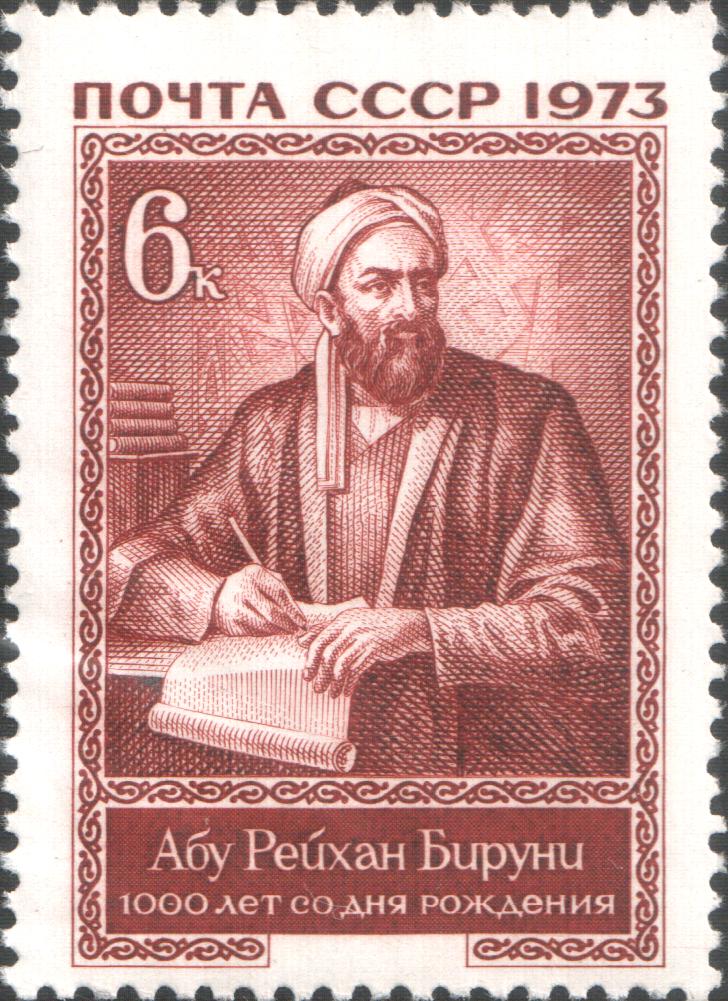In the 10th and 11th centuries, a number of authors who wrote in Arabic were aware of the existence of a language particular to the region of Khwarizm. Abu Rayḥān al-Bīrūnī is the most famous and knowledgeable of these authors, of course, being a native speaker of the Chorasmian language. But travellers and scholars such as Ibn Faḍlān and al-Maqdisi reported on this language, and their judgements on the way it sounded to them, but did not record any examples of the language.

‘Abd al-Karīm al-Sam‘ānī (d. 1166), however, seems to have actually known something of the Chorasmian language. Originating from Merv in today’s northwestern Iran, not all that far from Khwarizm, he may have actually heard the language being spoken. In his biographical dictionary known as the Kitāb al-Ansāb (ed. Hyderabad, 1962, Vol. II, p. 353), he reports:
البيروني بفتح الباء الموحدة وسكون الياء آخر الحروف وضم الراء بعدها الواو وفي آخرها النون هذه النسبة الى خارج خوارزم فان بها من يكون من خارج البلد ولا يكون من نفسها يقال له فلان بيروني ست ويقال بلغتهم انبيژك ست والمشهور بهذه النسبة أبو ريحان المنجم البيروني
“al-Bayrūnī (with fatḥ/kasr of the 'b', sukūn of the 'y', ḍamm of the 'r', followed by 'w' and 'n'): This surname (nisba) refers to the outer parts of Khwarizm, for in that country if someone is from outside the town and not from the town itself they say of him fulān bayrūnī-st (فلان بيروني ست), but in their own language they say anbīcak yitti (read: انبيڅك يت). The person most well-known by this surname is the astronomer Abū Rayḥān al-Bayrūnī.”
The first of the terms cited in this Arabic passage is Persian: fulān bērūnī-st meaning simply “so-and-so is an outsider”. (Note that the manuscripts differ in whether they prescribe a fatḥ or a kasr on the b, so both bīrūnī and bayrūnī are possible!) While the editors of the Hyderabad edition give فلان بيروني هست, Sachau, already aware of this passage when he edited al-Biruni’s Chronology, gave his reading of فلان بيروني ست based on the Instanbul manuscript Mehmet Köprülü 1001 (Chronologie orientalischer Völker, xvii-xviii).
The second phrase, purporting to be in the local language, was not understood by Sachau, who simply translated it “so-and-so is an anbîzhak” (and the Hyderabad edition gives انبيذك هست), but it can be interpreted with reference to actual Chorasmian sources. In the Muqaddimat al-Adab, the term ’nbyck pcx’s (in the ms. written partly unpointed as انٮٮڅك پڅخاس) can be found glossing the Arabic term دثار “outer garment” (Benzing 1968, 31-2; Benzing 1983, 61; MacKenzie 1972, 63). We can deduce that pcx’s refers to ‘garment’ by comparison with ’ndryck pcx’s in the same entry, where ’ndryck is easily comparable with Persian اندروني ‘inside’ and which is glossed as Arabic شعار “inner garment”. The Muqaddima‘s testimony shows that the انبيژك of al-Sam‘ānī must be using ž to represent the c [ts] of Chorasmian, for which a special letter did not exist outside of actual Chorasmian writings. The adjective “outside” is thus simply anbīcak.
The second part of this phrase in the local language is written ست in the manuscripts of the Kitāb al-Ansāb. In principle, I suppose the Persian enclitic copula form =st could have been borrowed into Chorasmian, but I don’t think it is attested in the Chorasmian sources; or, al-Sam‘ānī could have Persianized an unfamiliar Chorasmian phrase, retaining only the word “outside” but using the Persian copula form. Another option exists, though, which is to read ست as a later manuscript error for the Chorasmian 3sg. copula يت yitt(i), which later copyists probably wouldn’t have made sense of. This is what I’ve done here, emending the manuscripts’ انبيژك ست to انبيڅك يت to reflect better the underlying Chorasmian. Therefore, in my reading, al-Sam‘ānī correctly reflects the Chorasmian phrase anbīcak yitt(i) as equivalent to the Persian bayrūnī-st “is an outsider”.
